Below you will find pages that utilize the taxonomy term “C64”
Sorting Algorithms Visualized on the Commodore 64
Three Maze Generators on the Commodore 64
16-bit Unsigned AND on Commodore 64
I have a project that requires something beyond the default BASIC that’s available on the Commodore 8-bit computers. Actually, it’s several things.
- 16-bit AND for unsigned integers
- XOR
- Decimal to Hex
- Hex to Decimal
I can get two of these by utilizing Simon’s BASIC Cart: XOR and Hex to Decimal.
Today, we’re going to implement a 16-bit unsigned AND .
In Commodore 64 BASIC V2, the AND operator works with 16-bit signed integers (-32768 to +32767).
Back to the basics with BASIC (and Python): Binary Search
Back to the basics with basic
Let’s say for a moment that we’ve got an ordered list of numbers.
1,3,5,7,9,11,13,15,17,19,21,23,25
There are 13 values here and we want to check if the number 25 is in this list.
One way to do this would be to loop over each element in the list and check to see if it matches what we’re looking for.
In BASIC, we’d do something like
Machine Language: Count Faster on 6502
I’ve done a lot of silly math, ciphers and asked a lot of my vintage hardware on this site over the years. But I’ve not talked a ton about optimizing code for faster results.
Today, we will count from 0 to 2^24-1 (16,777,215). Nothing else. Count, time it, and see how fast we can get it to go.
Rust
In Rust on my 2020 MacBook Pro:
use std::time::{Instant};
fn main() {
// Start timing
let start = Instant::now();
// Loop from 0 to 16777215
for _i in 0..=16777215 {
// The loop body is empty, just like in the BASIC code
}
// Calculate elapsed time
let duration = start.elapsed();
// Convert elapsed time to seconds
let elapsed_seconds = duration.as_secs() as f64
+ (duration.subsec_nanos() as f64 / 1_000_000_000.0);
println!("Counting to 16777215 took {} seconds", elapsed_seconds);
println!("That's {} additions per second", 16777216.0 / elapsed_seconds);
println!("On 2 GHz Quad-Core Intel Core i5")
}

Visualize and verify the reverse engineered Commodore 64 SID LFSR
Recently, we looked at a simple LFSR and how it works.
- Shift the bits
- XOR some of the bits together; we call these the taps
- Replace a bit with the XORed value.
- Repeat
Easy peasy.
I’ve long been fascinated by the Sound Interface Device (SID) in the Commodore 64, mostly because you can use it to get random numbers.
But how does it work?
The Commodore 64 SID LFSR is 23-bits. It’s a maximal length LFSR, which means it will cycle through all 8,388,608 numbers before repeating. It’s often used to generate random numbers in games. Or if you’re nuts, you can use it to do cryptography on a Commodore 64. Who would ever do that?
A Gentle Introduction to LFSRs
What is an LFSR?
An LFSR is a Linear Feedback Shift Register. It’s a simple way of generating a sequence of numbers that look random.
Used in cryptography and in generating pseudo-random numbers, they are interesting because they are so simple. Shift bits and feed a few of them back into the sequence. That’s it.
Important note: LFSRs are not cryptographically secure on their own. ESPECIALLY 8-bit LFSRs. More on that in the next post on this topic.
Quick Post: Printing binary numbers in Commodore BASIC 2.0
Commodore BASIC 2.0
A lot of fun with binary numbers can be had by printing them to the screen. This is a quick post to show how to do that with Commodore BASIC 2.0. This is a follow up to Quick Post: XOR in Commodore BASIC 2.0.
We’ll be using both of these in upcoming posts, so it’s good to have them handy.
5 REM PRINT ALL 8 BIT NUMBERS IN BINARY
10 FOR N= 0 TO 255
20 FORI=7 TO 0 STEP-1
25 B=0
30 IF N AND 2^I THEN B=1
40 PRINTMID$(STR$(B),2);
50 NEXT
60 PRINTN
70 NEXT
This prints all the numbers from 0 to 255 in binary. It’s a little slow, but it’s easy to understand and fun to watch.
A gentle introduction to two's complement
I was recently on a video call with a friend, throwing around some ideas for a new product. I mentioned adding large signed numbers in assembly and using two’s complement. He asked me what two’s complement was. I was a little surprised that he didn’t know. He’s been a Java programmer for more than 30 years. Java and Python programmers (and others like gasp Commodore / MicroSoft BASIC) don’t have a native unsigned integer type. The language takes care of the details for you.
N-Queens problem
N-Queens Problem
The N-Queens problem is a classic in computer science. Place N queens on an NxN chessboard such that no queen can attack another queen.
Wut.
Imagine you’ve got a chessboard and a bunch of queen pieces. Your mission is to place these queens on the board so that none of them can attack each other. That means no two queens can be in the same row, column, or diagonal. It’s like a puzzle where you’ve got to keep the peace in the royal family by making sure each queen has her own personal space.
Rail Fence Cipher on Commoodore 64 and TI 99/4A
I have a BUNCH of nieces and nephews. Over the years, doing some secret message passing with them around birthdays and holidays has been fun.
The “secret” location of hidden Christmas presents is a favorite.
Traditionally, we’ve used a transposition cipher like the Shift or Ceasar Cipher
For something different, we’re going to use another transposition cipher called the Rail Fence Cipher. It is easy to implement and understand. Plus easy to break, so it’s a good teaching tool.
A grid drawing rabbit hole
I’m working on the next in the Cipher series and want to start drawing graphs on a Commodore to show letter freqency analysis. I needed a way to lay out screens by hand to determine how I was going to fit a lot of data on a limited screen. Many books in the 70s and 80s containted templates for this, but I figured we could just make our own.
My mockup in Python looks something like this.
Building a software serial bridge
Modern and retro mix
One of my favorite peices of retro clone hardware is Bob Corsham’s KIM-1 Clone. I’ve featured it many places like the 6502 speed series.
I have the latest model of this board, and he made an interesting design choice. It actually has an FTDI chip on board and you use that via USB to connect via a modern computer with an FTDI driver. This is very convenient for working with a modern computer, but then eliminates the ability to use a real serial port.
Blinkenlights
In the world of tech, including vintage tech, the lure of the blinkenlight is strong.
And if you don’t like blinkenlights, can we even be friends?
My PiDP-8 might be the ultimate in blinkenlight flexing, BUT we can probably do some other fun stuff if we use math. And science!
Vicarious excitement is not as good as the real thing, he finds. - Cryptonomicon Neal Stephenson, 1999
40 years on, this is still the best maze algorithm
My friend Robin’s favorite demo is 10 print. And what’s not to love about 10 print? After all, there’s even a book about it.
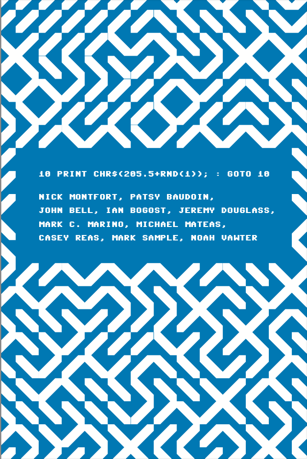
My Favorite Demo
My favorite demo is more complex but still simple enough to understand. The Maze Generator, from Compute! December 1981 by Charles Bond has been a favorite of mine since it came out. In the filing cabinet of my mind, I even remember it as the “Page 54 Maze”.
Validating Pilish
Have you ever sat down at your old Olympia typewriter and felt compelled to write poetry in which each word is the same length as successive digits of Pi?
Me too!!!
This is called a Pilish:
The idea of writing a sentence (or longer piece of poetry or prose) in which the lengths of successive words represent the digits of the number π (=3.14159265358979…) has been around since the early 1900’s. - Writing in Pilish
My mostly retro writing platform contenders in National Novel Writing Month for 2022 NaNoWriMo
I’ve participated in National Novel Writing Month for the last two years. While I don’t have aspirations of being a fiction author, I think there is a ton of value in writing 1500 words daily. Good writing or bad, 45000 words in a month is worth the effort.
In 2021, I used a DOS 386 with Wordperfect 6.22 to complete the writing for the month and produced a pretty terrible Techno/Wilderness thriller that no one should be subjected to reading. Using a 386 Laptop was a fantastic experience, and WordPerfect for DOS remains one of the best distraction-free word processors ever created.
A little more speed from the 6502
Can we get a little more speed from a 6502 than we did last week? Almost certainly.
The memory test we used was a general-purpose one. It’s flexible and reusable. The price is some speed. Let’s try and make it faster.
The test machine for this one
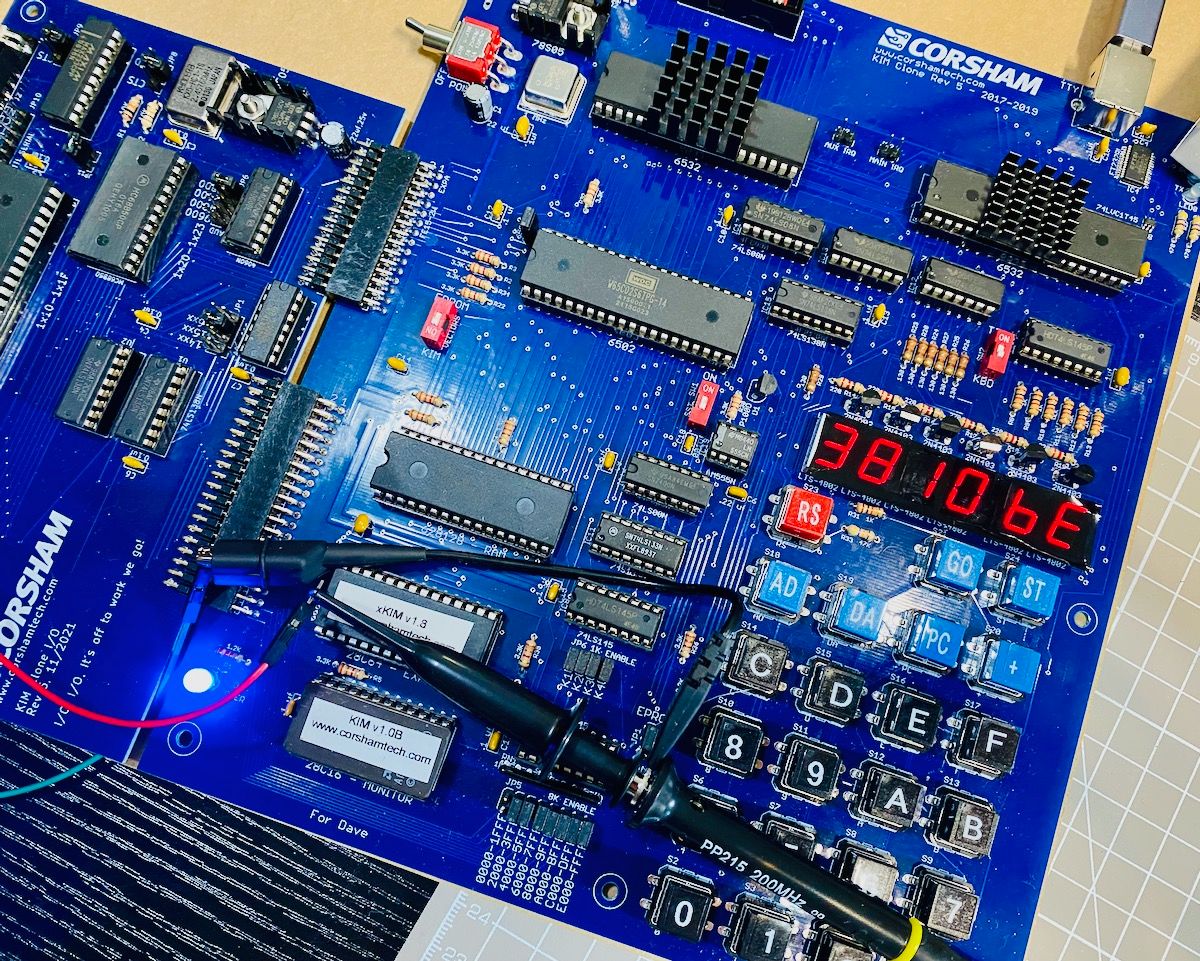
I’m going to rerun the test on a Corsham KIM-1 Clone for a couple of reasons:
- It’s still on my desk from last time
- It’s clocked at EXACTLY 1Mhz
- It has a large block of contiguous memory available if we want it without ROMs , etc. getting in the way.
- The memory expansion is connected directly to the bus, making the “expansion” the same access speed as the built-in memory
- It doesn’t compete with other devices (I’m looking at you, video chips!), so we’re just talking 6502 and memory here.
And by clocked at EXACTLY 1Mhz, assuming the frequency counter in my scope is pretty accurate:
How fast can a 6502 transfer memory
The amazing Gregorio Naçu posted the article title graphic this week to bring attention to the venerable 6502 processor and poke fun at Apple’s M2 chip marketing slides. He’s doing probably the most ambitious single-person Commodore 64 project I know of and has a fantastic blog.
Apple claims the new M2 chip has the following specs.
 M2 features Image by Apple via Youtube
M2 features Image by Apple via Youtube
We all know that these numbers are probably a little fluffy. Maybe a lot fluffy, and in practical applications, they are probably pretty far off. Benchmarking in a lab is fine, but the numbers rarely reflect real-world performance.
64 Bit Addition and Products on Commodore: The Wheat and Chessboard problem
Dealing with large numbers in computing has been an attractive problem area for a long time. Using an average calculator might lead you to believe that it’s too tricky for most applications.
But it’s not that difficult. And to prove it, we’re going to implement this calculation on machines with 8 Bit registers (I mean, cmon, on this site, you can’t even pretend to be shocked).
Yet another version of the 100 door problem; this time, let's extend Commodore BASIC to add PRINT @, shall we?
I stumbled across a ZX Spectrum version of the 100 Door problem that got me thinking. Wouldn’t it be nice to have PRINT AT in Commodore BASIC?
We do this in Assembly all the time.
We already know from several previous articles that moving the cursor is pretty straightforward using a Kernal routine:
Load the row number in X, the column number to Y, clear carry, and jump to $fff0. Simple.
The terrible random number generation in the Commodore 64 (and 128)
Quite a while ago, I started playing with random numbers on 8 Bit machines. I don’t think anyone is doing “serious” work on these machines, but playing with Ciphers and Crypto got me at least curious about how a Commodore 64 generates random numbers.
There are many ways to determine randomness. Humans are pretty good at picking out patterns in visual representations. Luckily our beloved machines have easy screen memory access. Let’s poke some random stuff to the screen and see what we see.
Simple splitting the screen with two colors on the Commodore 64
Someone asked me yesterday how to very simply split the Commodore 64 screen to display two solid colors.
The screen is 1000 “blocks”(character cells) starting at Hex $0400 (1024 decimal). It’s 40 characters wide and 25 rows.
25 rows don’t divide evenly, so we can tell the VIC register to hide a small part of the screen to display 24 rows instead. Register $d011 needs bit 3 toggled to zero to set the screen to 24 rows.
Permutations of 1 to 9 in Python, BASIC, and 6502 Assembly
Someone asked me this week if I would help him with a graph theory problem on 8-Bit machines. The first task was to get all permutations of 1 to 9. Since the total permutations is 9! (362,880) I knew this would take a while.
Learning without learning, the standard library problem
There are no shortcuts to pretty much anything worth doing. If you fail to learn the basics, then when you get to more advanced things, the basics will feel like black magic, and the thing you’re working on will only make sense on the surface.
Can you do Advent of Code on 8-Bit Machines?
There’s a wonderful yearly online event called Advent Of Code (#adventofcode). Each day there are two code challenges that follow a holiday narrative. Some of them are easy, and some of them are quite difficult.
This year I’ve attempted to do as much of it as I can on 8-Bit Machines. Mostly Commodore 64 because it’s what I know the best, and also what I like most to actually code on.
Quick Tower of Hanoi with Sound on the Commodore 64
I LOVED Ayliean MacDonald’s Tower of Hanoi video on Numberphile this week. I wanted to try it with some “soothing” sounds from the 80s with the SID from a Commodore 64
No code breakdown this time, just a little Thursday lunchtime fun I whipped up during a conference call ;-)
Maybe over the weekend we should try and match her key and make it 90 beats per minute like she does.
Dice frequency
I’ve been obsessed with the Random number generator on the Commodore computers for a LONG time, and I’m not the only one who is, to be sure.
We’ve used this random function in many of the Cipher series articles before, both via BASIC and directly getting randomness from the SID oscillator 3.
Let’s try a “practical” example we might code into a game that throws dice and tests the frequency distribution. For one or two dice, we can easily calculate what a “perfect” distribution should be, so this should be a good test to see if the random number generator is sufficient to make a fair game.
Calculating Pi via the Gregory-Leibniz series in BASIC on the Tandy Color Computer 2
Back in March, we did a simple set of programs to brute force calculate Pi using a simple and well-known series. It works, even if it’s inefficient.
Speaking of inefficient, it’s September and that means it’s time for #Septandy! I have a Tandy Color Computer 2 - 16k of RAM version. There are versions of this machine with more RAM and an enhanced version of BASIC called “Extended BASIC”, but I’ve had this machine since the 80s and it is the most entry-level version Tandy made.
Just for fun, the 100 door problem on several different systems
What’s the 100 door problem?
It’s a just for fun problem in “beginning” math and computer courses. The idea is simple:
There are 100 closed doors in a row.
You walk past the doors 100 times (100 passes)
The first time, visit every door. If the door is closed, open it. If it is open, close it. In programming, you’d probably call this toggling the door so let’s call it that.
Running Commodore 64 BASIC Programs on a PET
The Commodore 64 and PET are fairly similar systems. Other than a few memory location differences, many BASIC programs written for the Commodore 64 that don’t use graphics can run on a PET.
There is one caveat. The PET doesn’t relocate a saved BASIC program to the beginning of BASIC, like all of the Commodore lines after it. So if you find yourself trying to load a program on your PET written on one of its younger siblings, you may wonder why it loads, but you can’t find it.
Making and breaking Ciphers on the Commodore 64, er VIC-20 - Lagged Fibonacci Sequence and a little Monte Carlo while embracing contraints
We’re on ANOTHER random number generation technique today. Let’s work on the Lagged Fibonacci Sequence, a fun way to use the Fibonacci Sequence on itself to generate pseudo-random numbers.
One of our long term goals is to add a bunch of tools to our toolbox. Making reusable components makes doing more complicated things easier. You can rifle through your toolbox in hopes of an “Oh, I already have something we can use for this part!”.
Running the 8 Bit Show and Tell VIC-20 Super Expander Programming Challenge on the Commodore 64
One of my favorite videos on the whole internet lately is this hidden gem by Robin. In it, he executes a programming challenge he found on Twitter to draw a pattern without using IF statements.
His approach is one of my favorite math tricks of all time, and I was excited to see him use it in practice. I’ve only used it for you know… math tests.
Here’s the video if you’ve not seen it. Watch it, we’ll wait…
The retro pinout project
One of my main goals in sharing retro computing is to help people DO things with these machines. They are useful for all sorts of reasons, not the least of which is education and demonstration. The constraints are wonderful for this.
Using 30-50 year old hardware comes at a price. They are, well… old.
They require constant care and maintenance and parts are becoming more and more scarce.
Enter the retro pinout project
In fixing or maintaining these old computers, one of the best resources you can have is a similar working model next to it. Being able to test things out on a working example is invaluable.
Quick Post: Modulus in BASIC 2 without a cartridge
I posted this on Twitter a few weeks ago, but a young lady has been exploring programming in Python and also with Commodore BASIC which is pretty neato. She’s 11 and asked if there was a way to do modulo functions on Commodore BASIC because she’s using her Dad’s VIC-20 and Simon’s BASIC is obviously not available for the VIC-20.
The answer is pretty simple and will actually work in most programming languages.
If we wanted to do A mod B (or A%B in a lot of newer programming languages) we can do it in one line. We’re really just looking for the remainder of a division that we’ll call R
Making and breaking Ciphers on the Commodore 64 Part 12 - Pontifex - Solitaire from Cryptonomicon
Cryptonomicon Pontifex/Solitaire
We’re back to my favorite book for another round. We’ve done quite a bit with Cryptonomicon so far. One of my favorite moments is when Enoch Root introduces a cipher that two prisoners used to communicate using just a humble playing card deck.

Drawing of the mine in the book
Bruce Schneier
Pontifex is an encryption method you can do with another person using a deck of cards. It was invented for “Cryptonomicon” for Neal Stephenson by Bruce Schneier. He called it Solitaire. In the book it’s called Pontifex to obfuscate the method a little bit.
Making and breaking Ciphers on the Commodore 64 Part 11 - One time pads on a Commodore 64, probably a bad idea
A while ago, I explained in detail how to generate one time pad sheets and use them to encrypt and decrypt messages.
It turned out to be doable, only requiring a pencil and a way to create random numbers, but it’s slow, error prone and tedious.
Why
The one time pad article was born out of my annual reading of Cryptonomicon. I wanted to learn how to make these pads, which if used correctly are mathematically unbreakable. I figured 3 or 5 other people might read it and learn how to make them too.
Making and breaking Ciphers on the Commodore 64 Part 10 - Finding hash collisions with a type in game from 1984
Hashes
We did an implementation of a once popular hashing function in Part 8 on RC4 without really going into why.
A hash function is any function that is used to map data of an arbitrary size (input) to a fixed size output. An algorithm is applied to the input and results in a fixed length output called the hash.
In cryptography it’s important to get a repeatable output for a given input, but ideally NO information about the input that created it.
Making and Breaking Ciphers with Commodore 64 Part 9 - Finding Smallish Primes
Recap
So far we’ve
- Reversed a string
- Shifted bits left and right (mostly right)
- Brute forced a known simple cipher
- Channeled our inner John Connor by cracking ATM machines
- Searched through a large number looking for matches
- Learned how to use XOR to recover data
- Created a Linear Feedback Shift Register to generate better random numbers
- Implemented a “real” but outdated cipher: RC4
Disclaimer: I’m sure I’ll get an angry email from a mathematician about this, but we’re going for understanding here. No one expects to be looking for large primes on a Commodore 64. Calm down.
Quick Post: Slow text on the Commodore
An “almost teenager”, Josh, sent me an email yesterday asking how I do slow text on the Commodore. He is just starting assembly at 12 which is pretty impressive. He’s been using KickAssembler, but wants to try it “on hardware”.
It’s not difficult really. There are probably a lot of ways to do this, here’s how I do it in Turbo Macro Pro.
Let’s start with some text: ARE YOU KEEPING UP?
The Commodore 64 N.O.O.C.U.L.A.R. futbal project
Concept Cyberdeck
I’m fortunate to have a number of vintage computers I’ve collected over the years. Some were fun finds, others donated. One I’ve had since 1983 (we think) and it’s one of my most prized possessions.
I travel a fair bit and not long ago I was looking for something for my “TheC64” to do. It’s technically an emulator, but with it’s accurate Breadbin keyboard and REU support it makes a pretty decent development platform for some things.
Making and breaking Ciphers on the Commodore 64 Part 8 - RC4
Recap
So far in this 8 part series on doing weird things with Ciphers on old computers we’ve:
- Reversed a string
- Shifted bits left and right (mostly right)
- Brute forced a known simple cipher
- Channeled our inner John Connor by cracking ATM machines
- Searched through a large number looking for matches
- Learned how to use XOR to recover data
- Created a Linear Feedback Shift Register to generate better random numbers
The warning
“In September, 1994 someone posted source code to the Cyberpunks mailing list-anonymously. It quickly spread to the Usenet newsgroup sci.crypt, and via the Internet to ftp sites around the world. Readers with legal copies of RC4 confirmed compatibility. RDA Data Security, Inc. tried to put the genie back into the bottle, claiming that it was still a trade secret even through it was public, it was too late. It has since been discussed and dissected on Usenet, distributed at conferences, and taught in cryptography courses.” - Applied Cryptography, Bruce Schneier, 1997
Repairing a Commodore 128 and DIY Chris's RAM tester review
I have several items from DIY Chris that we’ll review over the next week including a GAL PLA and flash-able ROM drop in that can hold kernal, character or BASIC ROMs.
First on the list is the RAM tester.
The problem child 128
I have a Commodore 128 which developed a bad RAM issue a few weeks ago. These old computers just sometimes sacrifice a part to the component gods.
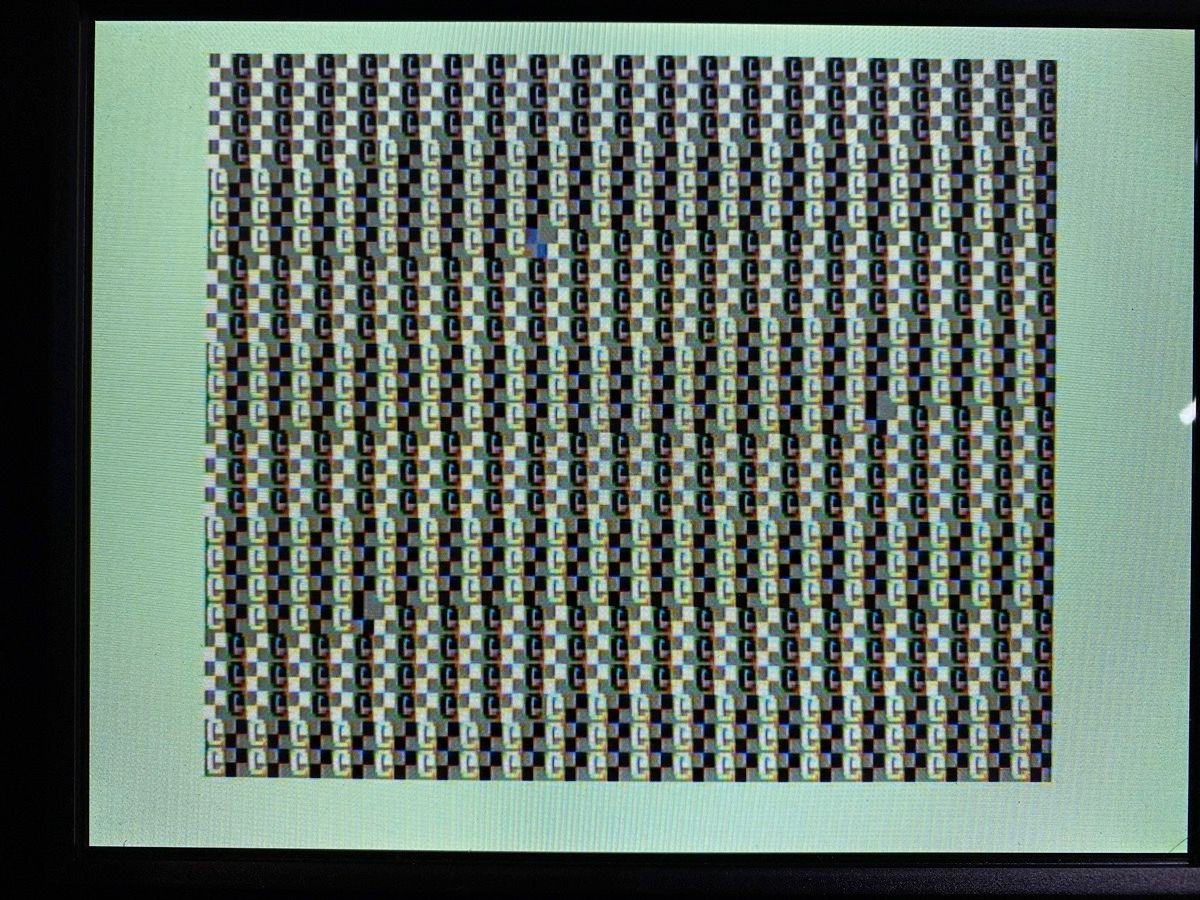
Well character rom seems to be working anyway
Making and breaking Ciphers on the Commodore 64 Part 7 - Pseudo Random with Linear Congruential Generators
So far in this 7 part (shocked I’ve made it through 7!) series on doing weird things with Ciphers on old computers we’ve:
- Reversed a string
- Shifted bits left and right (mostly right)
- Brute forced a known simple cipher
- Channeled our inner John Connor by cracking ATM machines
- Searched through a large number looking for matches
- Learned how to use XOR to recover data
Author’s Note:
This one stretched my skills quite a bit, but I kept it under 2000 words (by 89). I’m not sure when I started this I knew I’d be doing a Linear Congruential Generator on a 40 year old machine, but here we are ;-)
Making and Breaking Ciphers with a Commodore 64 - Part 6: XOR is Magical - Data recovery
Review
So far we’ve:
- Reversed a string
- Shifted bits left and right (mostly right)
- Brute forced a known simple cipher
- Faked it, but then looking for a 4 digit known pin
- Searched through a large number looking for matches
We now have most of the basic skills in Assembly to start doing some real work. Let’s tackle what is arguably the most important of the bitwise operators for ciphers and encryption: The exclusive OR. (XOR/EOR)
Finding the Prodigal Easter Egg inside the Easter Egg on a Commodore 64
If you REALLY want to get into the weeds on how I figured out the Easter Egg(s) inside the Easter Egg on a 35 Year old album on a 35 year old computer then you’re in luck! This video is for you!
I mention “the original author” in the video several times, but fail to say his name. It’s Tom Beaton (aka TCB1984)
Quick post: Determining length in Commodore Assembly
A common task in our code is to determine the length of something. In this example, let’s check the length of a string like “are you keeping up?”
In Python, this is crazy easy.
#!/usr/bin/env python
message = "are you keeping up?"
len(message)
In 6510 Assembly, this is also easy. Not crazy easy, but straightforward anyway.
messagelength
ldx #$00
checkdel
lda message,x
cmp #$00 ; or whatever we're using as a delimeter
beq done
inx
jmp checkdel
done
stx messagelen
rts
.byte messagelen 0
message .null "are you keeping up?"
Pretty easy right?
Benchmarking Retro Computers (mostly Commodore) with marginal methods
Just the BASICs, please
Our friend in retro @NoelsRetroLab has a simple BASIC benchmarking tool that’s fun to use to compare different basic systems execution speed.
We’re counting jiffies, which is roughly (sometimes very roughly) 1/60th of a second.
We’re using three variations of this code on the Commodore BASIC computers. This will vary a little if you try it on something else. And PLEASE try this on whatever you have. It’s for “science”!!!
Jiffies in Assembly
Many of you know that you can use a “Jiffy” on a Commodore as a measure of time. Sorta.
The short short version is that we have a 3 byte clock that increments once every interrupt, so 1/60th of a second. It’s not considered reliable as a real time clock, but it IS useful for benchmarking.
According to “Compute’s Complete Guide to the C64” p. 156:
“TI equals PEEK(162) + 256PEEK(161) + 256256*PEEK(160); for TI$, the value of TI (in jiffies) is converted into hours, minutes, and seconds.”
Making and Breaking Ciphers with a Commodore 64 - Part 5: Wargames
Let’s recap a little
So far we’ve:
- Reversed a string
- Shifted bits left and right (mostly right)
- Brute forced a known simple cipher
- Faked it, but then looking for a 4 digit known pin
What we need next in our toolbox is to be able to search through a large number of values to look for something. This will build on the previous skills and also reinforce working with tables and 24 bit math on an 8Bit Processor.
Calculating Pi via the Gregory-Leibniz series in BASIC on the VIC-20
It’s Pi day tomorrow, and you know what that means!
Cherry is favorite. Apple is second favorite.
There is a well known and easy to understand method for calculating Pi with the Gregory Leibniz series. Leibniz built on the work on Gregory.
It has the added benefit of being pretty inefficient to implement on computers. This seems like a job for the Commodore VIC-20!
Our outcome repeats a variation of:
__π = (4/1) - (4/3) + (4/5) - (4/7) + (4/9) - (4/11) + (4/13) - (4/15)…
Quick Post: Commodore 64 Simple Addition Efficiency
There are many hacks you can do in Assembly language on the Commodore.
Here’s a very easy one with impressive results according to my analog stopwatch.
We want to count to $ffffff or 2563 (224) which is 16,777,216
We wont print to the screen to save a lot of time, and just put an “a” in the top right corner when we’re done.
One way (and yes, I want to know all the other ways you know of to do this) would be:
c0pperdragon verdict
Ahh, the quest for a better Vintage computer picture never ends. I’m having fun with it anyway.
Side thought: At what point does a computer cross over from old: no one wants that 2007 Windows tower you built in your basement, to OMG, it’s Vintage, let’s drive up the eBay bids to the stratosphere!!!!
How bad was it?
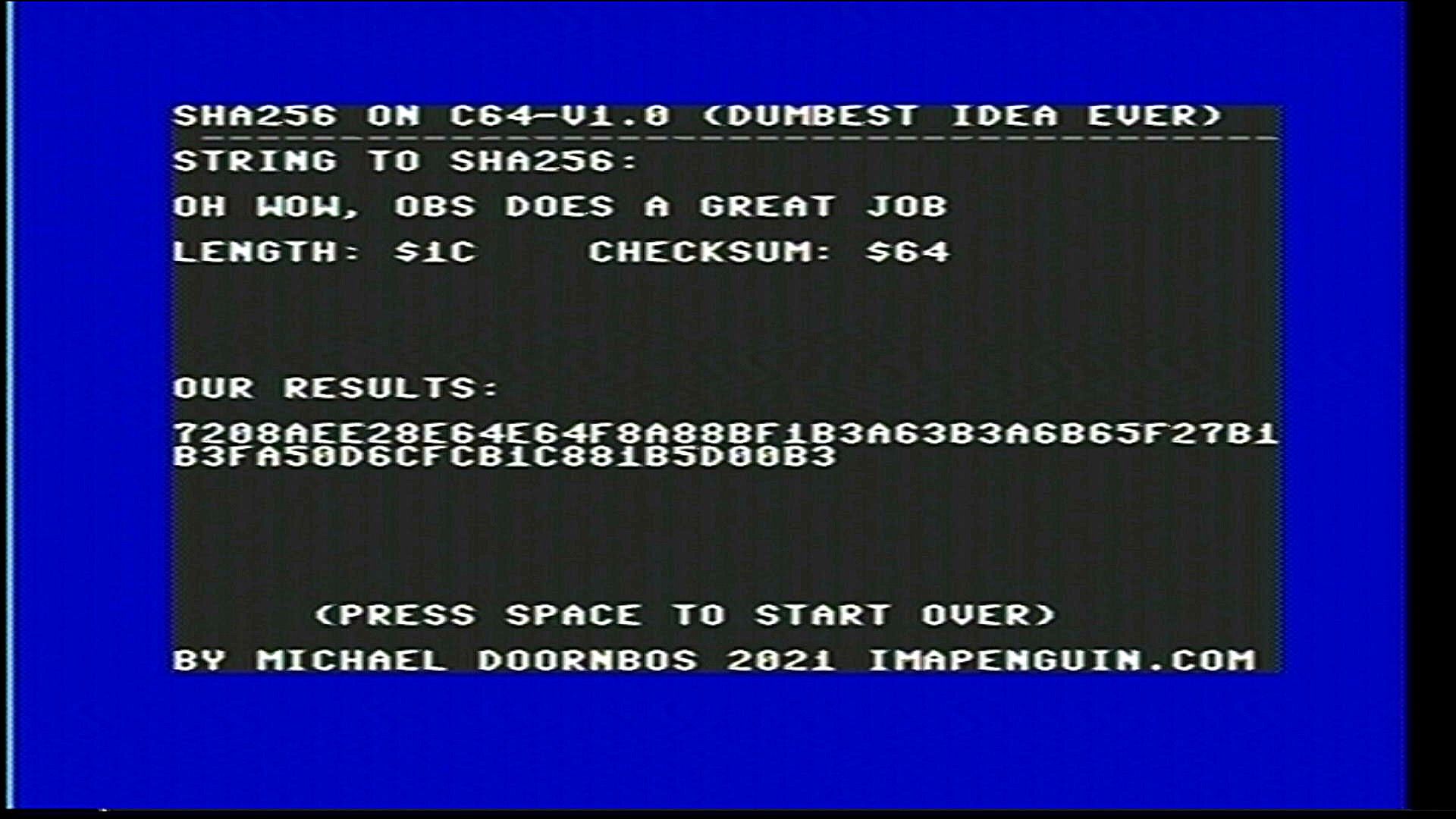
Original picture from my 64C PAL Machine. Muddy with jailbars, but I’ve gotten used to this over the years
Making and Breaking Ciphers with a Commodore 64 - Part 4: The PIN Program from Terminator 2
A few minutes into Terminator 2, the young John Connor takes his Atari Portfolio out of his bag and inserts a foil covered card into an ATM machine and proceeds to crack a pin number and steal some cash from an unsuspecting account.
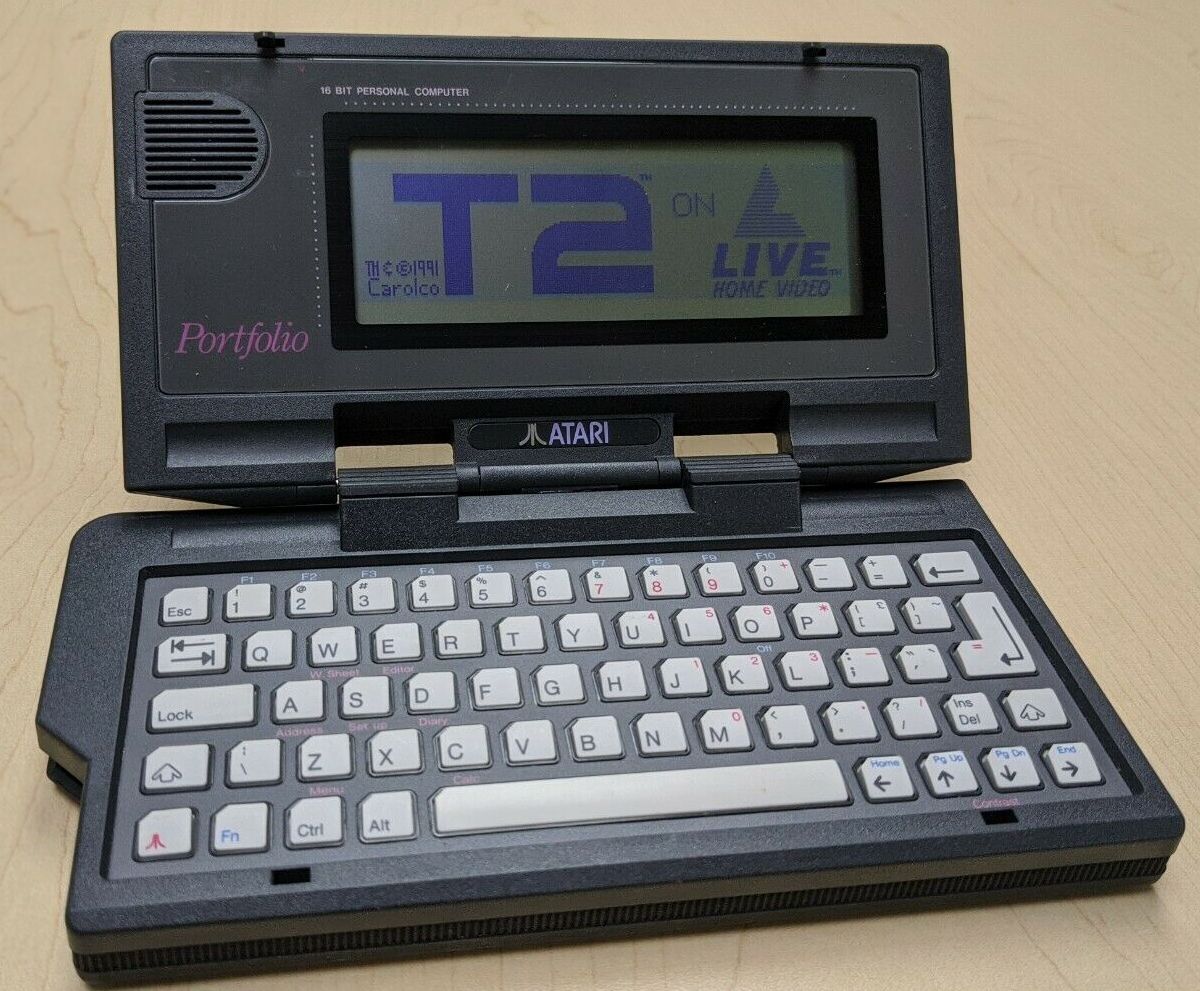
This is a movie prop and doesn’t really appear to do anything useful. It’s almost certainly just a script that runs on the Atari Portfolio, and just counts down some strings to make a “cool” effect.
Making and Breaking Ciphers with a Commodore 64 - Part 3: The Caesar Cipher
Well here we are at part three and it’s a lot to pack into one page.
Let’s build upon [what I called the Shift Cipher] and implement what is often referred to as the Caesar Cipher, although there is much debate on when this was really first done.
The idea is the same as our Part 2. We’re going to shift the letters a given number of times, but this time we’re going to do the encoding and decoding programmatically instead of just creating a reference to do it by hand.
Making and Breaking Ciphers with Python, er Commodore- Part 2: The Shift Cipher
In Part 1 we did a simple reverse of a string. While simple, these software steps will help build the skills we need going forward in Assembly without feeling like I skipped right to a 300 line after doing a short one. One foot in front of the other and all that.
The Shift Cipher
For Christmas, my wife and I bought my sister’s kids this code wheel. It implements a simple shift cipher to be transposed by hand. This was common low tech way to scramble messages for quite some time, and fits nicely in between reversing a string and a more complex implementation of the Caesar cipher in software.
Replacing an RF Modulator on a Commodore 64C
The output on my newest Commodore 64 (1989) is pretty marginal. The colors are okay(ish) but the text lines are clearly bleeding and the picture is very muddy. Most vintage computers don’t do red text on blue very well, but this one is particularly painful.
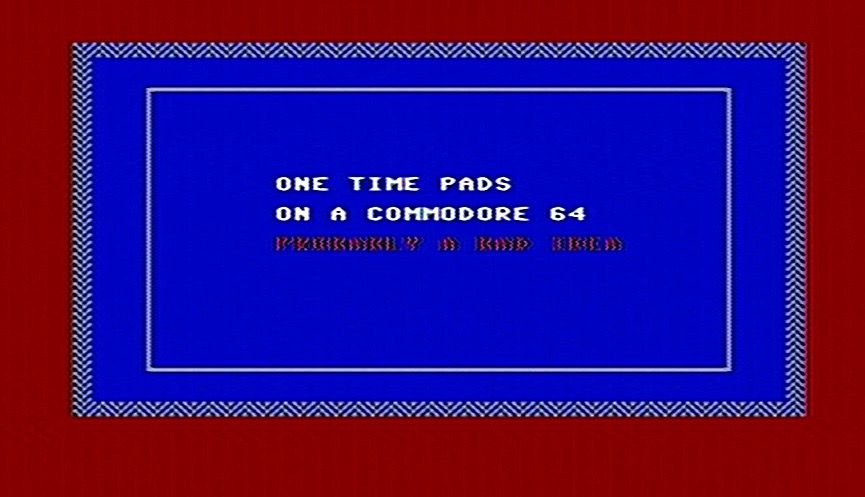
Red on dark blue is too much to ask almost any vintage computer
Making and Breaking Ciphers with Python, er, a Commodore- Part 1: The Reverse Cipher
Sometime during my weeklong exploration of SHA-256 on a Commodore realized that there was a whole world of exploration that could be explored. Just because a Computer system is old, doesn’t mean it’s not interesting or useful.
I had expected it to take months to figure out the SHA-256 implementation, but it only took me a week or so. This was pretty surprising to me and is an excellent demonstration of what might be possible on a Commodore 64
Simple, 'unbreakable' encryption with a pencil
Last week, at this bat-time on this bat-channel, I talked about checking off one of my 35 year old bucket list items by learning Commodore assembly language. (shut up, you’re old too.) Coincidentally, I picked this up at the time I was re-reading Cryptonomicon by Neal Stephenson for the ump-teenth time. There are a few books that I consider so good that they’re worth re-visiting, and this is one of them.
If you haven’t read it, you don’t need to worry about spoilers. The plot is multi-generational. One character, Lawrence Waterhouse, is a high level Allied Cryptographer tasked with cracking codes and coming up with new encryption methodologies. His weapon of choice for the most secure messages is the one time pad.
Getting started with Native Commodore 64 Assembly
Some time in the month of September 2020 I dug out the old Commodore 64 that my Dad bought for himself in 1983. It quickly migrated its way into my room and stayed there until 1993 when I joined the Navy. Someone in my family, probably Mom, carefully packed it back into its original box and put it into storage. Despite its many years of use/ abuse by a messy teenager, it’s in surprisingly good condition, 38 years later. (You’re old.) Back then, I had attempted some programming on it, but I had the patience and focus of your typical suburban kid. Over the years I’ve thought about the many hours I spent on that machine (remember when computers lasted more than a single year?) and as a seasoned developer I began looking at the computer and seeing more potential than I was able to realize as a kid. Modern software is very powerful. Unfortunately, if you program with it long enough, it stops feeling “real.” It’s like learning to fly on Microsoft Flight Simulator, versus taking private pilot lessons to actually control and fly a real aircraft. My experience with flying actual planes prepared me to recognize the distinction that afternoon in September when I pulled out my old machine. I had the idea that if I could get closer to the bites, I could become a better programmer. And if that didn’t work, I could at least have fun with it. (nostalgia is a hell of a drug.)
Friday fun: Games I'm playing in Jan 2021
I’m blown away by some modern games still being developed for the Commodore line of computers.
Both games I’m playing in January are sold by Protovision, who has probably the best vintage company name on the market right now.

Soul Force is an excellent take on a side-scrolling space shooter (maybe the cool kids abbreviate these SSSS?). It seems both familiar and unique, which is hard to do in a space based shooter like this.
Did you do that on real hardware?
People are funny on the internet. We always seem to divide into tribes even when it’s not necessary or advantageous to do so.
I wasn’t surprised to see someone (there’s always one isn’t there?) comment that I might be using real hardware, but for only part of my retro setups.
“I’m disappointed that you’re using an LCD monitor on your retro computers”
You’re… disappointed? Kinda dramatic isn’t it?
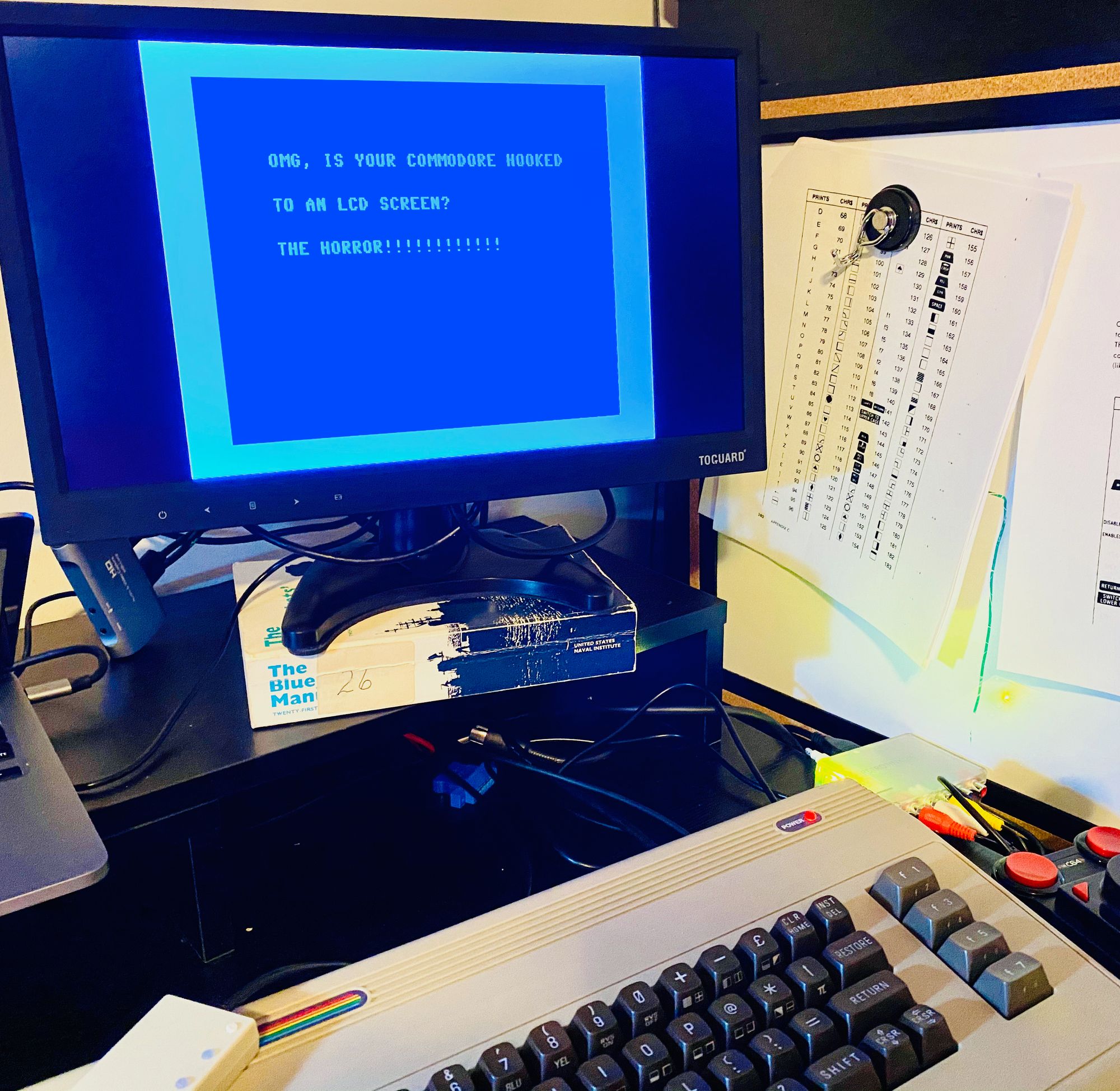
Do I get more pleasure out of doing retro on real hardware rather than emulators? I do. Do I think less of someone who only uses emulators? Absolutely not, it would be silly to. Besides, emulators like VICE are incredible feats. They work REALLY REALLY well and represent many thousands of hours of hard work over decades. I’m in awe of these kinds of projects, not ashamed of them.
Why does there have to be a why?
It was just a few months ago that I started to get back into 8-Bit computing. It started with Ben Eater’s Breadboard 6502 build. Something about his complete exploration of that build including single stepping the clock and watching the processor registers was really compelling to me.
I built Ben’s project by following along with the videos. It’s currently inside a shadowbox in my office wall blinking away :-)